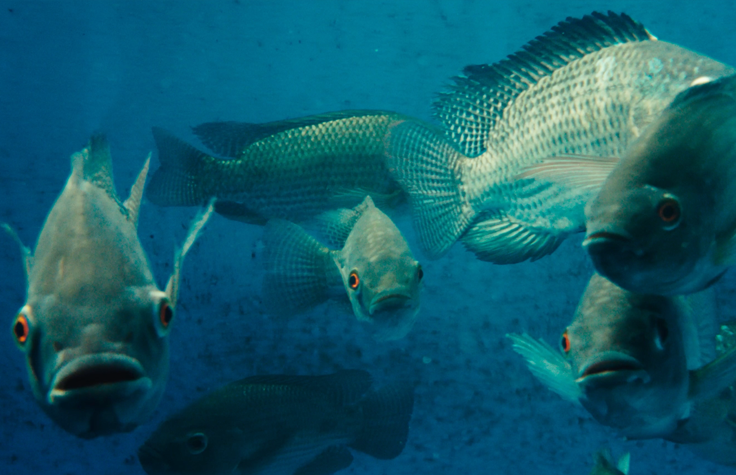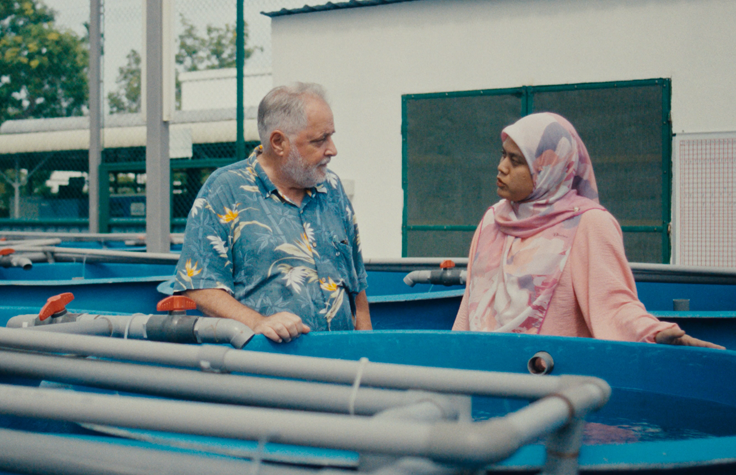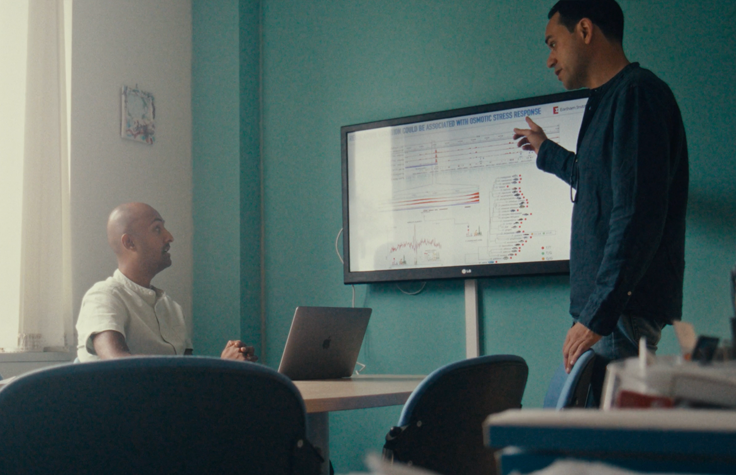
March 5, 2024
WorldFish: Better aquaculture through selective breeding
Benzie is principal scientist at WorldFish, based in Penang, Malaysia. His organization works to transform aquatic food systems to reduce hunger, malnutrition, and poverty. One of their most groundbreaking achievements to date is the genetically improved farmed tilapia, or GIFT, a selectively bred strain of Nile tilapia introduced in 1988 that grows twice as fast as wild varieties and to a larger size.
Tilapia is the second-most-farmed fish in the world, after carp. It can be raised on small farms, and it’s an important source of protein, iron, potassium, and other nutrients for developing nations in sub-Saharan Africa, Southeast Asia, and South Asia. Benzie explained that GIFT’s faster growth means a farmer can grow more fish in a shorter season, which could make all the difference in whether they turn a profit on their investment.
Keeping small-farm production both economically and environmentally sustainable is one of WorldFish’s primary interests. The organization makes GIFT’s germplasm available to research organizations or national governments that agree to use it responsibly, and by their estimations, today GIFT is farmed in 14 countries and constitutes fully half of the world’s tilapia production.
WorldFish continues to improve fish traits through their selective breeding programs, which primarily look for disease resistance and ability to withstand changes in temperature and salinity.
Benzie described how these programs work, step by step: “Every year we take out old fish from the previous generation. We make calculations based on the pedigree we have—we know how they’re all related to each other—and we use the best fish to breed the next generation.” They choose promising males and females to pair, incubate their eggs, and raise the newborn fish. “We keep each family separate so we know who is who—who the parents were—and we then take these fish at three months of age, and put in a little microtransponder so we can identify each individual fish.” Then the fish are moved to a bigger tank once they reach adulthood, and the process starts over again.
Decisions about which pairs to breed can be made significantly faster, and more accurately, if they know their fish’s genetic information—and they’ve found just the right partner to unlock this knowledge.

John Benzie (left) and his colleagues at WorldFish work to transform aquatic food systems to reduce hunger, malnutrition, and poverty. Video still: Illumina
The Earlham Institute: Finding the right genes for the job
The Earlham Institute is a life science research hub in Norwich, England, that uses genomics to decode the scale and complexity of living systems. Karim Gharbi, its head of Genomics Pipelines, researched genetic markers in fish for his PhD—he credits his career to a lifelong fascination with the documentaries of Jacques Cousteau.
His colleague Tarang Mehta is a postdoctoral researcher seeking to understand the basis of gene regulation in fish, specifically how some genes are linked to better salinity adaptation in certain tilapia species but not others. He hopes that, with sufficient genomic information, WorldFish could breed tolerance to fluctuating salinity into species that are farmed in developing countries.
The Earlham Institute isolates their DNA samples from tiny pieces of fin collected from live fish across the world and sequences them using the Illumina NovaSeq X Plus System. Then, by analyzing the generated data, they can identify genetic markers that express desirable traits.
Among those traits, disease resistance may be the most critical—tilapia lake virus alone is responsible for up to 90% of tilapia mortality worldwide. “Once we have a disease developing in a particular farming industry like aquaculture,” Gharbi said, “this can start spreading from farm to farm, and every outbreak event is a loss to the farmer. The faster we can help farmers grow fish less susceptible to disease, the less income they will lose.”
Having access to an animal’s genome is a breakthrough that changes how organizations like WorldFish can operate: Previously, breeders had to directly expose fish to a virus in order to select individuals who showed better resistance to it. Now they can avoid this step, arriving at answers faster and without causing unnecessary harm.

At the Earlham Institute, Tarang Mehta and Karim Gharbi use genomics to decode the scale and complexity of living systems. Video still: Illumina
The NovaSeq X Series: Fast, accurate, and sustainable
The Earlham Institute serves many users in the UK and beyond who depend on them to generate high-quality data quickly, affordably, and sustainably, and Gharbi and Mehta both attest to the NovaSeq X Series’ strengths in that arena.
Under optimal conditions, Gharbi said, they can receive samples from WorldFish and return results within five days. And in a recent evaluation of the institute’s “green impact,” the NovaSeq X Series’ sustainable reagents helped them demonstrate their efforts to reduce waste.
“The Illumina NovaSeq X is a cutting-edge technology,” Mehta added, “which allowed us both the speed and scale to sequence some of the things that we require with regards to genome sequencing, transcriptome sequencing, and epigenetic sequencing.” Taking multiomic approaches gives them more power to apply their findings to their mission of improving food security.
As he spoke about the institute, Mehta reinforced time and again how important it is to him to translate the work they’re doing at the genomic level directly into sustaining food biodiversity. “In a rapidly changing world, where disease is not going to wait for us and a changing environment is not going to wait for us,” he said, “it’s important for us to have not only just the speed, but also the scale of data quickly—for us to translate these findings to then move quickly back into the field to better inform genomic selection breeding programs.”
Fish can drown
It might sound counterintuitive, but fish can actually suffocate if there isn’t enough oxygen in their water. Benzie explained that many farmers in WorldFish’s areas of concern lack the means to aerate their ponds at night—when the algae present stop photosynthesizing oxygen, but the fish are still consuming it. Then, oxygen levels can fall so low overnight that the fish can drown. “Farmers, in order to avoid that effect, stock about half the amount that you would stock if you could aerate,” he said. This creates an unfortunate cycle: Less stock means lower profits, and even less chance to upgrade farm infrastructure to accommodate more fish. One piece of the solution, then, is fish that are bred to tolerate lower oxygen levels.


